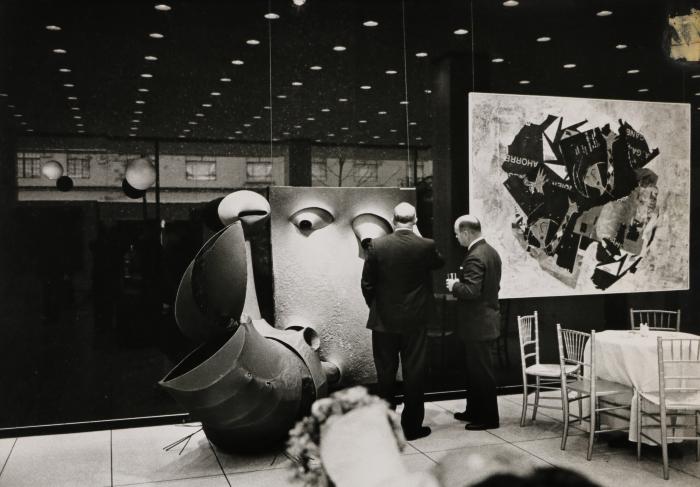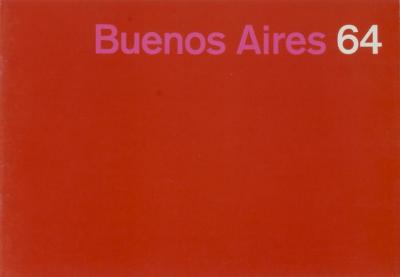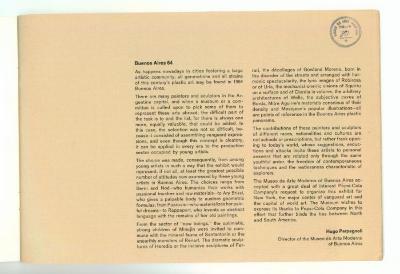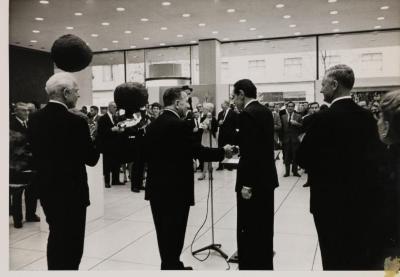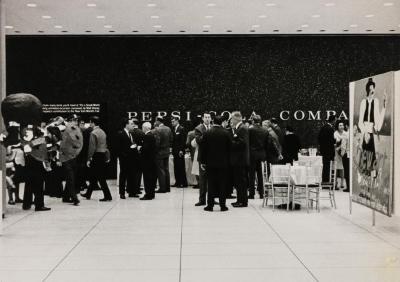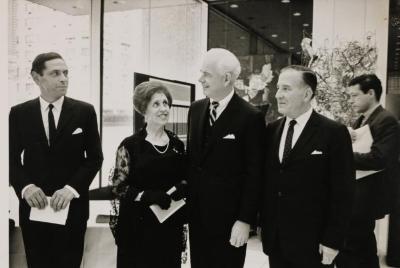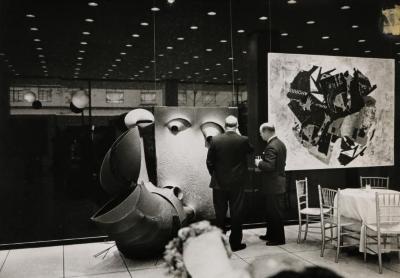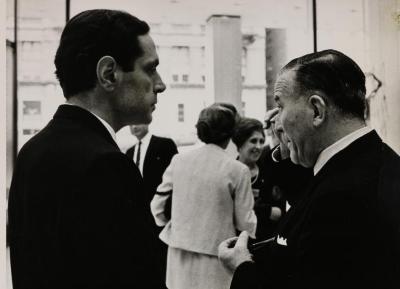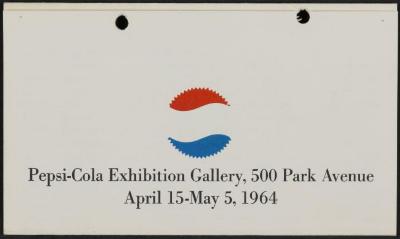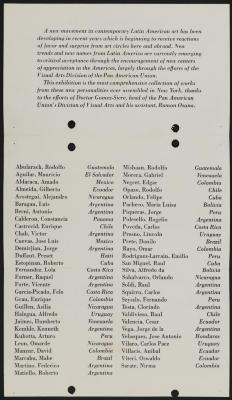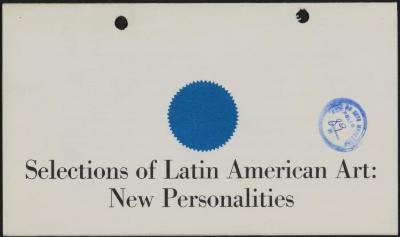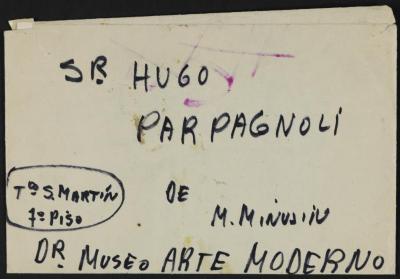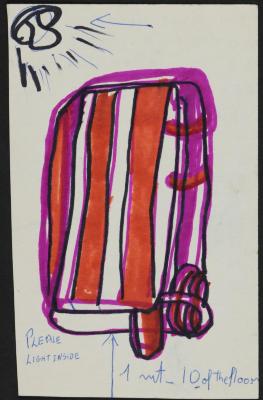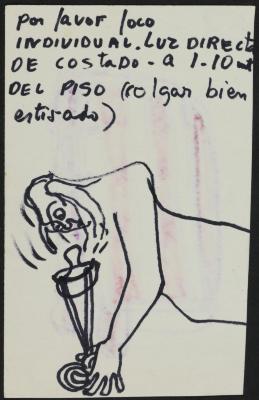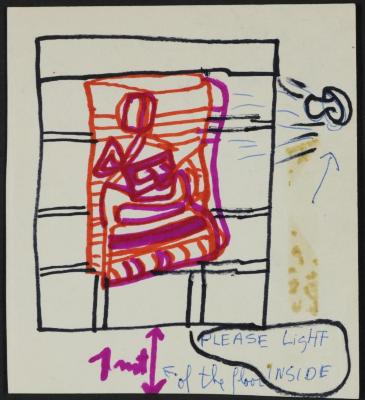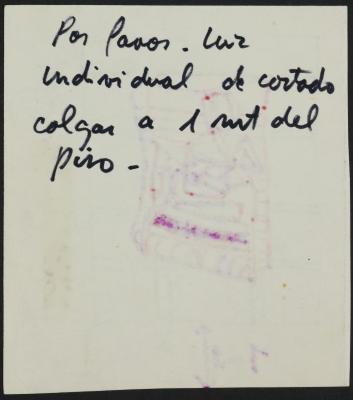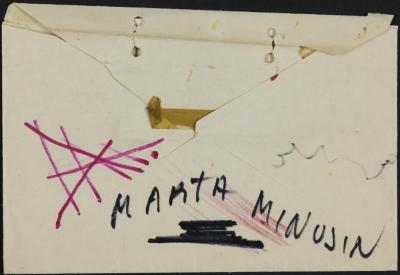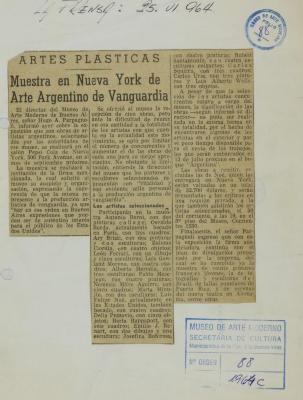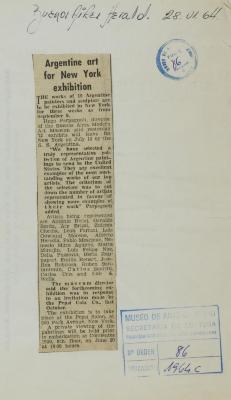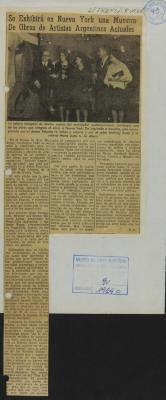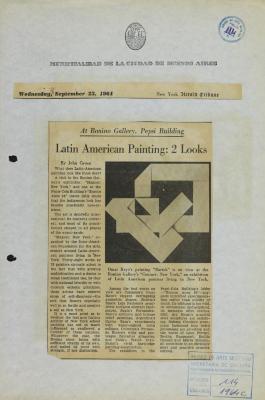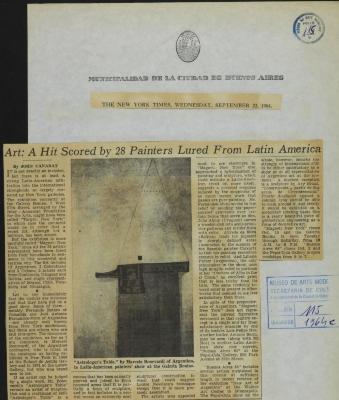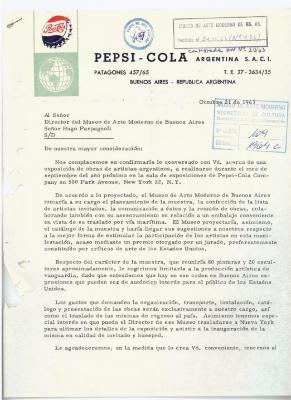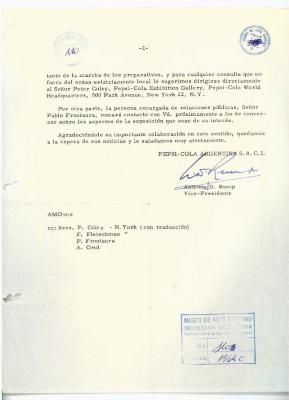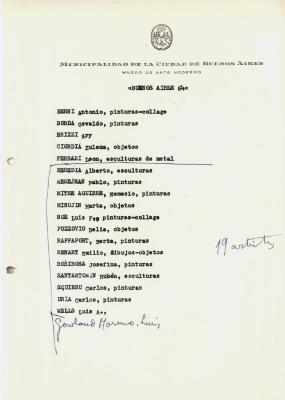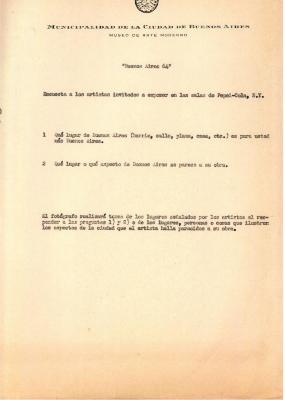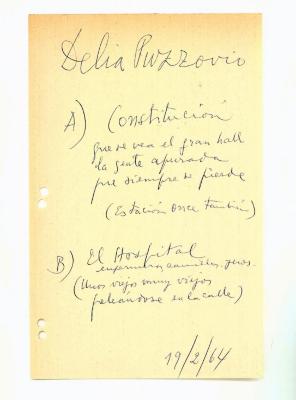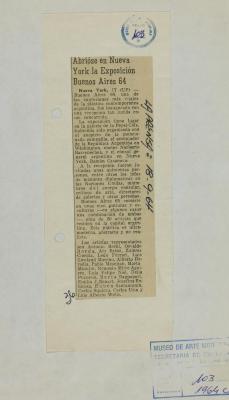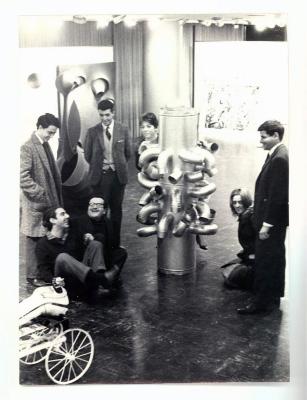exposición
Buenos Aires 64
15 de septiembre – 2 de octubre, 1964
As happens nowadays in cities fostering a large artistic community, all generations and all strains of this century's plastic art may be found in 1964 Buenos Aires.
There are many painters and sculptors in the Argentine capital, and when a museum or a committee is called upon to pick some of them to represent these arts abroad, the difficult part of the task is to end the list, for there is always one more, equally valuable, that could be added. In this case, the selection was not so difficult, because it consisted of assembling vanguard expressions, and even though this concept is aleatory, it can be applied in every era to the production sector occupied by young artists.
The choice was made, consequently, from among young artists in such a way that the exhibit would represent, if not all, at least the greatest possible number of attitudes now expressed by these young artists in Buenos Aires. The choices range from Berni and Noé-- who humanize their works with passional touches and raw materials--to Ary Brizzi, who gives a palpable body to austere geometric formulas; from Puzzovio--who materializes her painful dreams--to Rappaport, who invents an abstract language with the remains of her old paintings.
From the sector of 'new beings', the optimistic, strong children of Minujin were invited to commune with the mineral fauna of Santantonín or the unearthly monsters of Renart. The dramatic sculptures of Heredia or the incisive sculptures of Ferrari, the décollages of Gowland Moreno, born in the disorder of the streets and arranged with harmonic spectacularity, the lyric images of Robirosa or of Uria, the mechanist-oneiric visions of Squirru on a surgace and of Ciordia in volume, the arbitrary architectures of Wells, the subjective caves of Borda, Mitre Aguirre's materials conscious of their density and Mesejean'a popular illustrations--all are points of reference in the Buenos Aires plastic panorama.
The contributions of these painters and sculptors of different races, nationalities and cultures are not schools or prescriptions, but rather frank opening to today's world, whose suggestions, seductions and attacks incite these artists to personal answers that are related only through the same youthful ardor, the freedom of contemporaneous techniques and the restlessness characteristic of explorers.
The Museo de Arte Moderno of Buenos Aires accepted with a great deal of interest Pepsi-Cola Company's request to organize this exhibit for New York, the major center of vanguard art and the capital of world art. The Museum wishes to express its thanks to Pepsi-Cola Company in this effort that further binds the ties between North and South America."
Hugo Parpagnoli
Texto publicado en el catálogo de la exposición Buenos Aires 64, organizada por el Museo de Arte Moderno de Buenos Aires, 1964.
There are many painters and sculptors in the Argentine capital, and when a museum or a committee is called upon to pick some of them to represent these arts abroad, the difficult part of the task is to end the list, for there is always one more, equally valuable, that could be added. In this case, the selection was not so difficult, because it consisted of assembling vanguard expressions, and even though this concept is aleatory, it can be applied in every era to the production sector occupied by young artists.
The choice was made, consequently, from among young artists in such a way that the exhibit would represent, if not all, at least the greatest possible number of attitudes now expressed by these young artists in Buenos Aires. The choices range from Berni and Noé-- who humanize their works with passional touches and raw materials--to Ary Brizzi, who gives a palpable body to austere geometric formulas; from Puzzovio--who materializes her painful dreams--to Rappaport, who invents an abstract language with the remains of her old paintings.
From the sector of 'new beings', the optimistic, strong children of Minujin were invited to commune with the mineral fauna of Santantonín or the unearthly monsters of Renart. The dramatic sculptures of Heredia or the incisive sculptures of Ferrari, the décollages of Gowland Moreno, born in the disorder of the streets and arranged with harmonic spectacularity, the lyric images of Robirosa or of Uria, the mechanist-oneiric visions of Squirru on a surgace and of Ciordia in volume, the arbitrary architectures of Wells, the subjective caves of Borda, Mitre Aguirre's materials conscious of their density and Mesejean'a popular illustrations--all are points of reference in the Buenos Aires plastic panorama.
The contributions of these painters and sculptors of different races, nationalities and cultures are not schools or prescriptions, but rather frank opening to today's world, whose suggestions, seductions and attacks incite these artists to personal answers that are related only through the same youthful ardor, the freedom of contemporaneous techniques and the restlessness characteristic of explorers.
The Museo de Arte Moderno of Buenos Aires accepted with a great deal of interest Pepsi-Cola Company's request to organize this exhibit for New York, the major center of vanguard art and the capital of world art. The Museum wishes to express its thanks to Pepsi-Cola Company in this effort that further binds the ties between North and South America."
Hugo Parpagnoli
Texto publicado en el catálogo de la exposición Buenos Aires 64, organizada por el Museo de Arte Moderno de Buenos Aires, 1964.
